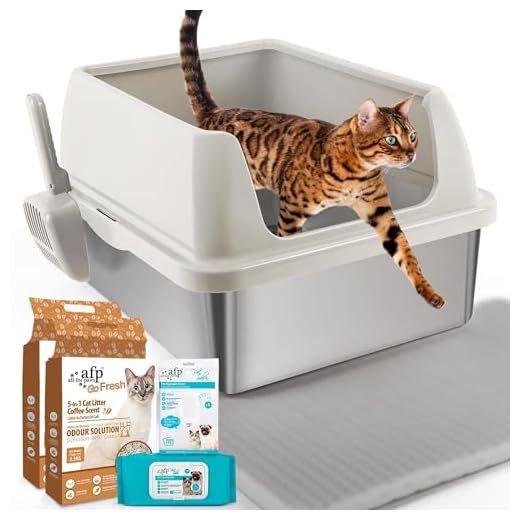

As a Scottish Fold with a keen interest in human health, I must say that sharing your home with a furry friend can be done with some precautions. It’s vital to address the risks associated with litter box maintenance, as exposure to certain parasites, particularly Toxoplasma gondii, can pose a concern. Regular cleaning and proper hygiene can significantly reduce any potential threat.
Consulting with a veterinarian is a proactive step. They can provide tailored advice based on your specific circumstances. Ensuring that your little friend is up-to-date on vaccinations and flea treatments minimizes any health risks. A healthy pet is less likely to transmit any illnesses.
Maintaining a safe environment is also critical. Keep your companion indoors to limit exposure to outdoor pathogens. Creating a dedicated space for them can help reduce stress during this transitional time. With careful planning and attention, the companionship of a four-legged friend can continue to brighten your days.
Understanding Toxoplasmosis Risks
Pregnant individuals should be aware of the potential for toxoplasmosis, a disease caused by a parasite found in the feces of infected animals, particularly felines. To minimize exposure, it’s advisable to delegate litter box duties to someone else. If that isn’t possible, ensure proper hygiene by using gloves and washing hands thoroughly after handling litter.
Signs of Toxoplasmosis
Many may not show symptoms, but some can experience flu-like signs, including fever, muscle aches, and fatigue. Severe cases might lead to complications, affecting the central nervous system. If any signs appear, consult a healthcare provider promptly for testing and guidance.
Preventive Measures
To reduce risks, avoid handling raw or undercooked meat, as it can also harbor the parasite. Ensure that fruits and vegetables are washed well before consumption. Maintaining a clean home environment and keeping outdoor areas free of stray animals can further diminish the likelihood of exposure.
Maintaining Cat Hygiene During Pregnancy
Regular cleaning of the litter box is crucial. I suggest having someone else change it daily, if possible. If that’s not an option, ensure to wear gloves and wash hands thoroughly afterward.
Keep my eating area clean. Wash my food and water bowls daily with hot, soapy water to eliminate bacteria.
Grooming is important too. Brush my fur frequently to reduce shedding and dander. This helps keep the living space clean and minimizes allergens.
Monitor my health closely. Schedule regular veterinary check-ups, particularly to ensure I’m free from parasites. Keeping me parasite-free protects everyone in the household.
Consider using a high-quality vacuum cleaner to maintain a clean environment. Vacuum carpets, curtains, and other surfaces regularly to remove hair and allergens.
Here’s a quick reference table for hygiene practices:
| Task | Frequency | Notes |
|---|---|---|
| Litter box cleaning | Daily | Wear gloves and wash hands |
| Food/water bowl washing | Daily | Use hot, soapy water |
| Grooming | Several times a week | Reduces shedding and allergens |
| Veterinary check-ups | As recommended | Monitor for parasites |
| Vacuuming | Weekly | Focus on carpets and surfaces |
By following these guidelines, you can create a hygienic living environment that ensures comfort for everyone involved.
Safe Practices for Cat Interaction
Engaging with your feline companion can be enjoyable and enriching. Here are specific practices to ensure interactions remain positive and low-risk:
Gentle Handling
- Always approach with calmness. Sudden movements can startle.
- Use gentle strokes, focusing on areas they enjoy, like behind the ears or under the chin.
- Avoid picking up or holding tightly; let them choose to come close.
Supervised Playtime
- Opt for interactive toys to keep distances manageable.
- Monitor play sessions closely to prevent rough behavior.
- Encourage play with wand toys or laser pointers, maintaining a safe space.
Incorporate regular breaks to reduce overstimulation and stress. It’s essential to recognize signs of discomfort or agitation, such as tail twitching or flattened ears. Respect their personal space, allowing them to retreat when needed.
Communicate with your furry friend using a soothing voice. This can help create a secure environment, fostering trust and companionship.
Consulting Your Healthcare Provider
Before any decisions, it’s wise to reach out to your healthcare professional. Discuss your living situation and any concerns regarding your furry friend. A tailored assessment based on your health history can yield specific recommendations.
Questions to Consider
Prepare a list of inquiries to guide your discussion. Ask about potential concerns related to parasites, allergies, or any other health issues that may arise from sharing your space with a pet. Clarifying these points can help you make informed choices.
Follow-Up Appointments
Keep your provider informed about any changes in your health or environment. Regular check-ups can help monitor your well-being and address any emerging questions or issues. Staying proactive ensures both you and your beloved companion remain healthy.
Preparing Your Home for a New Baby and Cat
Designate areas in your space that will be off-limits for me and the little one. Use baby gates and secure doors to restrict access to certain rooms. This ensures a calm environment for both of us.
Invest in high-quality pet furniture and toys that are safe for infants. Opt for scratch posts that are sturdy and won’t tip over easily, as well as soft toys that won’t pose a choking hazard.
Set up a separate feeding and litter area for me, away from the baby’s space. Keep my food and litter box in a quiet corner where I can feel comfortable, but ensure it’s not too close to baby items.
Consider using air purifiers to maintain good air quality, especially since babies are sensitive to allergens. Regularly clean surfaces and vacuum to minimize hair and dander.
Introduce new smells gradually. Allow me to explore baby items before the arrival of the newborn, so I can get accustomed to any changes in the environment.
Plan for playtime and interaction. Allocate specific times for bonding with me to avoid feelings of neglect, while also attending to the needs of the infant.
Lastly, review guidelines about pet interactions and newborns. For more information on how to manage the dynamics, check out this link: where are g protein coupled receptors located.
Signs of Illness in Cats to Watch For
Pay attention to any changes in behavior or physical condition. A sudden decrease in appetite or excessive thirst can indicate underlying issues. Vomiting or diarrhea that persists for more than 24 hours is also a cause for concern.
Behavioral Changes
Uncharacteristic hiding, aggression, or lethargy may signal discomfort or illness. If I stop grooming myself or begin to vocalize more than usual, it’s worth investigating further.
Physical Symptoms
Look for abnormal discharge from the eyes, nose, or mouth. Changes in weight, whether gaining or losing, should be monitored closely. Additionally, if I start limping or showing signs of pain when moving, a veterinary visit is advisable. Ensure to provide a comfortable space for recovery, perhaps a cat condo for big cats, to help me feel secure.
FAQ:
Is it safe to have a cat while pregnant?
Yes, it is generally safe to have a cat during pregnancy. However, there are certain precautions pregnant individuals should take. One of the primary concerns is the risk of toxoplasmosis, a parasitic infection that can be transmitted through cat feces. To minimize this risk, pregnant women should avoid cleaning the litter box. If cleaning is necessary, it is advisable to wear gloves and wash hands thoroughly afterward. Additionally, regular veterinary care for the cat can help ensure the pet is healthy and free from parasites.
What precautions should pregnant women take if they own a cat?
Pregnant women should take several precautions if they have a cat. First, it’s important to avoid handling cat litter as it can be a source of toxoplasmosis. Ideally, another person should manage the litter box. If that’s not possible, wearing gloves and maintaining good hygiene are key. Secondly, keeping the cat indoors can help reduce exposure to potential infections. Regular veterinary check-ups for the cat are also recommended to ensure it is healthy. Lastly, maintaining a clean living environment and ensuring the cat is up to date on vaccinations can further minimize health risks during pregnancy.
What are the signs of toxoplasmosis, and how can I prevent it if I have a cat?
Toxoplasmosis can often be asymptomatic, but some people may experience flu-like symptoms, such as fatigue, muscle aches, and fever. To prevent toxoplasmosis while having a cat, it’s crucial to avoid handling cat litter, especially if it contains feces. If necessary, wear gloves and wash hands thoroughly afterward. Ensure your cat is kept indoors and is regularly dewormed and vaccinated, as outdoor cats are more likely to catch parasites. Additionally, avoiding raw or undercooked meats can help reduce the risk of exposure to the parasite. If you have concerns or experience symptoms, consult a healthcare professional.









